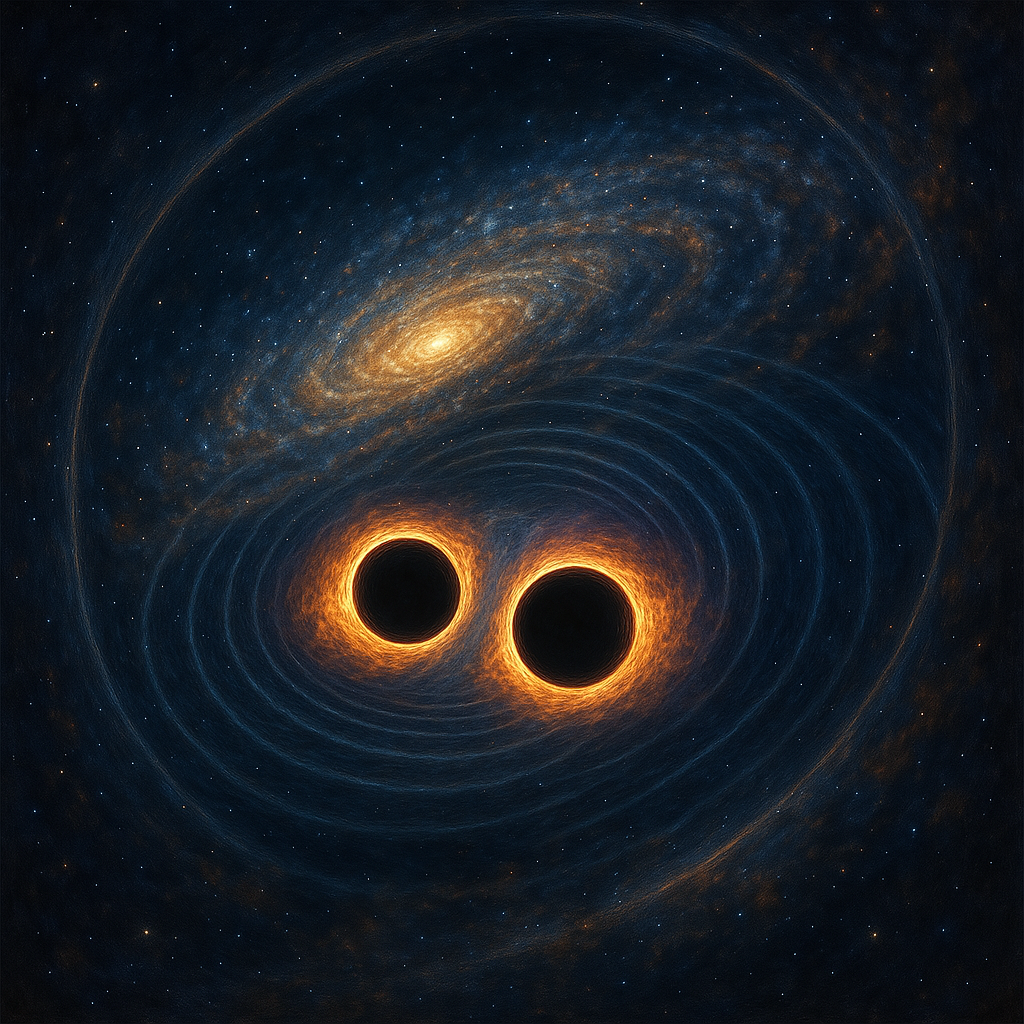Professor Hu Bin's Research Group From the School of Physics and Astronomy Published a Paper in Nature Astronomy

An artistic illustration of the effect of lensed gravitational waves
Professor Hu Bin's research group from the School of Physics and Astronomy published a paper titled "An interference-based method for the detection of strongly lensed gravitational waves" in the journal of Nature Astronomy.
The abstract of the paper is as follows:
The strongly lensed gravitational wave (SLGW) is a promising transient phenomenon. However, the long-wave nature of gravitational waves poses a considerable challenge in the identification of its host galaxy. Here, to tackle this challenge, we propose a method triggered by the wave optics effect of microlensing. The microlensing interference introduces frequency-dependent fluctuations in the waveform. Our method consists of three steps. First, we reconstruct the waveforms by using template-independent and template-dependent methods. The mismatch of two reconstructions serves as an indicator of SLGWs. This step can identify approximately 10% SLGWs. Second, we pair the multiple images of the SLGWs by using sky localization overlapping. Because we have preidentified at least one image through microlensing, the false-alarm probability for pairing SLGWs is significantly reduced. Third, we search the host galaxy by requiring the consistency of time delays between galaxy–galaxy lensing and SLGW. By combing the stage-IV galaxy survey and the third-generation gravitational wave detectors, we expect to find, on average, one quadruple-image system per 3 years. This method can substantially facilitate the pursuit of time-delay cosmography, discovery of compact objects and multimessenger astronomy.
Full text link:
https://doi.org/10.1038/s41550-025-02519-5


